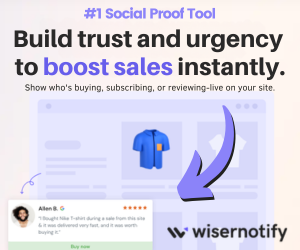
Last Updated on July 10, 2025 by Allen
The Ultimate Guide to Online Reputation Management for Multi-Locations
In today’s digital landscape, online reputation management for multi-locations has become a critical aspect of success.
With customers increasingly turning to the internet to research and make decisions about where to shop, dine, or seek services, maintaining a positive online presence across multiple locations is more important than ever.
This comprehensive guide will explore the intricacies of managing your brand’s reputation across various geographical areas, providing you with strategies and insights to excel in this crucial area of business management.
A. Definition of Online Reputation Management
Online reputation management (ORM) is the practice of monitoring, influencing, and controlling the digital narrative surrounding a business or brand. Online reputation management for multi-locations involves managing the online presence and customer perceptions across various geographical areas, ensuring consistency and positivity in brand image.
B. Unique Challenges for Multi-Location Businesses
Multi-location businesses face distinct challenges when it comes to online reputation management:
- Maintaining brand consistency across different locations
- Managing a high volume of reviews and customer interactions
- Coordinating efforts between central management and local teams
- Addressing location-specific issues while preserving the overall brand image
- Adapting to local market nuances while staying true to the brand
C. Importance of Maintaining a Consistent Brand Image Across Locations
A consistent brand image across all locations is crucial for several reasons:
- Builds trust and credibility with customers
- Enhances brand recognition and recall
- Delivers a uniform customer experience
- Strengthens overall market position
- Facilitates easier management of online reputation
Understanding Online Reputation Management for the Multi-Location Landscape
A. The Impact of Local Search on Multi-Location Businesses
Local search has become increasingly important for businesses with multiple locations:
- 46% of all Google searches have local intent
- 88% of consumers who do a local search on their smartphone visit or call a store within a day
- 78% of location-based mobile searches result in an offline purchase
These statistics underscore the importance of optimizing for local search in online reputation management for multi-location businesses.
B. How Customer Reviews Affect Each Location and the Overall Brand
Customer reviews play a significant role in shaping the reputation management of multi-location:
- Impact local search rankings on platforms like Google and Yelp
- Influence potential customers’ decisions
- Provide valuable feedback for improvement
- Affect the overall brand perception
- Can highlight discrepancies in service quality across locations
C. The Role of Google Business Profile in Local SEO
Google Business Profile (formerly Google My Business) is a critical tool for online reputation management for multi-location businesses:
- Improves local search visibility
- Provides a platform for customer reviews and ratings
- Allows businesses to share location-specific information
- Facilitates direct interaction with customers
- Offers insights into customer behavior and preferences
Key Components of Online Reputation Management for Multi-Location Businesses
A. Review Management
Effective review management involves:
- Monitoring reviews across all platforms (Google, Yelp, TripAdvisor, etc.)
- Responding promptly and professionally to all reviews
- Encouraging satisfied customers to leave positive reviews
- Addressing negative reviews constructively
- Analyzing review trends to identify areas for improvement
B. Local Listings Management
Proper local listings management includes:
- Claiming and verifying all business listings on platforms like Google Business Profile, Yelp, and Bing Places
- Ensuring NAP (Name, Address, Phone) consistency across directories
- Regularly updating business information
- Optimizing listings with relevant keywords and categories
- Monitoring and responding to customer questions on listing platforms
C. Social Media Presence
A strong social media presence for online reputation management for multi-locations requires:
- Creating location-specific social media accounts on platforms like Facebook, Instagram, and Twitter
- Maintaining brand consistency across all accounts
- Engaging with local communities
- Sharing location-specific content and promotions
- Monitoring and responding to customer inquiries and feedback on social platforms
D. Website Optimization for Local Search
Optimizing your website for local search involves:
- Creating location-specific landing pages
- Implementing local SEO best practices
- Using schema markup for local businesses
- Optimizing for mobile devices
- Incorporating location-specific keywords naturally into content
E. Brand Consistency Across Platforms
Maintaining brand consistency across all platforms includes:
- Developing clear brand guidelines
- Ensuring consistent messaging and visual elements
- Training local staff on brand standards
- Regularly auditing all online touchpoints for consistency
- Using tools like Hootsuite or Sprout Social for unified social media management
Strategies for Effective Review Management
A. Implementing a System for Monitoring Reviews Across All Locations
To effectively monitor reviews for all locations:
- Use an all-in-one ORM software like Review Dingo to aggregate reviews from multiple platforms
- Set up alerts for new reviews
- Assign team members to monitor specific locations or platforms
- Regularly analyze review trends and sentiment using tools like Brandwatch or Mention
B. Developing a Standardized Response Protocol
Create a standardized response protocol that includes:
- Use Review Dingo’s AI or smart templates to automate review responding
- Guidelines for response timing
- Templates for common types of reviews
- Escalation procedures for serious issues
- Training for local staff on proper response techniques
- Use of tools like Hootsuite or Buffer for streamlined response management
C. Encouraging and Incentivizing Customer Reviews
Implement strategies to encourage more reviews:
- Train staff to ask for reviews after positive interactions
- Include review requests in follow-up emails or receipts
- Offer incentives for leaving reviews (while adhering to platform guidelines)
- Make the review process as easy as possible for customers
- Use tools like Grade.us or NiceJob to automate review requests
D. Leveraging Positive Reviews for Marketing
Utilize positive reviews in your marketing efforts:
- Share positive reviews on social media platforms
- Feature testimonials on your website
- Use review quotes in advertising materials
- Create case studies based on positive customer experiences
- Incorporate reviews into email marketing campaigns using tools like Mailchimp
E. Addressing Negative Reviews Constructively
When addressing negative reviews:
- Respond promptly and professionally
- Acknowledge the customer’s concerns
- Offer to resolve the issue offline
- Follow up to ensure customer satisfaction
- Update the review response if the issue is resolved
- Use the feedback to improve operations across all locations
Optimizing Local Listings for Each Location
A. Claiming and Verifying All Google Business Profiles
For each location:
- Claim the Google Business Profile
- Verify ownership through the provided methods
- Optimize the profile with accurate and complete information
- Add high-quality photos and videos
- Use Google Posts to share updates and offers
B. Ensuring NAP Consistency Across Directories
Maintain consistent NAP information:
- Use an all-in-one listing management tool like Review Dingo to update information across multiple directories
- Regularly audit listings for discrepancies
- Correct any inconsistencies promptly
- Establish a process for updating information when changes occur
- Monitor citation-building progress using tools like BrightLocal
C. Customizing Location-Specific Information While Maintaining Brand Guidelines
Balance location-specific information with brand consistency:
- Create location-specific descriptions that adhere to the brand voice
- Highlight unique features or offerings of each location
- Use consistent branding elements across all listings
- Ensure all locations use the same business categories
- Utilize tools like Sprinklr for consistent brand management across locations
D. Utilizing Location-Specific Keywords in Listings
Optimize listings with location-specific keywords:
- Include city and neighborhood names
- Use local landmarks or well-known nearby locations
- Incorporate relevant local search terms
- Update keywords based on local search trends
- Use tools like SEMrush or Ahrefs for keyword research and tracking
Maintaining Brand Consistency Across Multiple Locations
A. Developing Brand Guidelines for Online Presence
Create comprehensive brand guidelines that cover:
- Logo usage and placement
- Color palette and typography
- The tone of voice and messaging
- Social media protocols
- Review response guidelines
- Use digital asset management tools like Bynder for easy access to brand assets
B. Creating Templated Responses for Customer Interactions
Develop a set of templated responses for:
- Positive reviews
- Negative reviews
- Neutral reviews
- Common customer inquiries
- Social media interactions
- Use tools like Review Dingo to manage customer interactions
C. Centralizing Content Creation and Distribution
Implement a centralized content
strategy:
- Create a content calendar for all locations
- Develop a mix of brand-wide and location-specific content
- Use a content management system like HubSpot for easy distribution
- Allow for local customization within brand guidelines
- Implement approval processes for location-specific content
D. Training Local Staff on Brand Voice and Online Interaction Protocols
Provide comprehensive training for local staff:
- Conduct regular workshops on brand guidelines and online reputation management
- Create easily accessible resources for quick reference
- Implement role-playing exercises for handling various online scenarios
- Use e-learning platforms like Docebo for ongoing training
- Regularly assess and provide feedback on staff performance in online interactions
Leveraging Technology for Online Reputation Management for Multi-Locations
A. Review Management Software Solutions
Utilize specialized software to streamline review management:
- Implement tools like Review Dingo for comprehensive review monitoring
- Set up automated alerts for new reviews across all platforms
- Use sentiment analysis features to gauge overall brand perception
- Generate reports to track review trends across locations
- Integrate review management with your CRM system for a holistic view of customer interactions
B. Local Listing Management Tools
Employ listing management tools to maintain consistency:
- Use platforms like Review Dingo to manage listings across multiple directories
- Automate updates to ensure NAP consistency
- Monitor for unauthorized changes to your listings
- Track the performance of your listings across various platforms
- Integrate with your overall online reputation management strategy
C. Social Media Management Platforms for Multiple Locations
Leverage social media management tools for efficient multi-location management:
- Implement enterprise platforms like Review Dingo for centralized control
- Schedule and distribute content across multiple location-specific accounts
- Monitor engagement and respond to customer inquiries efficiently
- Analyze performance metrics across all locations
- Ensure brand consistency while allowing for local flavor in social media interactions
D. Analytics Tools for Tracking Performance Across Locations
Utilize analytics tools to measure and improve performance:
- Implement Google Analytics for website performance tracking
- Use Google Search Console to monitor search performance for each location
- Employ tools like Ahrefs or SEMrush for competitive analysis and keyword tracking
- Implement location-specific tracking in your analytics setup
- Regularly review and act on insights to improve your online reputation management strategy
Building a Strong Online Presence for Each Location
A. Creating Location-Specific Web Pages
Develop unique pages for each location:
- Design templated layouts that maintain brand consistency
- Include location-specific information, hours, and contact details
- Optimize each page for local SEO
- Incorporate customer reviews and testimonials
- Include a Google Map embed for easy navigation
B. Developing Local Content Strategies
Create content that resonates with local audiences:
- Highlight local events and community involvement
- Showcase location-specific promotions and offers
- Create blog posts about local news and trends
- Feature staff profiles to add a personal touch
- Encourage user-generated content from local customers
C. Encouraging Location-Based User-Generated Content
Leverage customer-created content to boost local presence:
- Run location-specific social media contests
- Encourage customers to share photos and experiences
- Create location-specific hashtags for easy tracking
- Feature user-generated content on your website and social media
- Offer incentives for customers who create and share content
D. Implementing Local SEO Best Practices
Optimize for local search to improve visibility:
- Use location-specific keywords in titles, meta descriptions, and content
- Implement schema markup for local businesses
- Build local backlinks through community partnerships
- Optimize for mobile devices and voice search
- Regularly update and verify your Google Business Profile information
Measuring Success in Online Reputation Management For Multi-Locations
A. Key Performance Indicators (KPIs) to Track
Monitor these essential metrics:
- Overall star ratings across platforms
- Review volume and frequency
- Response rates and times
- Sentiment analysis trends
- Local search rankings
- Website traffic from local searches
- Conversion rates from local traffic
B. Setting Benchmarks for Individual Locations and the Overall Brand
Establish performance standards:
- Set realistic goals based on industry averages and past performance
- Create location-specific targets that align with overall brand objectives
- Regularly review and adjust benchmarks as needed
- Implement a scoring system to compare performance across locations
- Use tools like Chatmeter or BrightLocal for competitive benchmarking
C. Using Insights to Improve Strategies and Operations
Act on the data you collect:
- Identify top-performing locations and replicate their best practices
- Address underperforming locations with targeted improvement plans
- Use customer feedback to inform product or service improvements
- Adjust marketing strategies based on local performance data
- Continuously refine your online reputation management approach based on insights
By implementing these strategies and leveraging the right tools, multi-location businesses can effectively manage their online reputation, ensuring consistency and positivity across all locations. Remember, online reputation management is an ongoing process that requires constant attention and adaptation to changing digital trends and customer expectations.
Case Studies: Successful Online Reputation Management for Multi-Locations
A. Example of a Franchise Business Improving Online Ratings
A national fast-food chain implemented a comprehensive online reputation management strategy:
- Centralized review, monitoring, and response system
- Standardized training for all franchise locations
- Incentivized positive review generation
- Result: 1.2-star average rating increase across all locations within 6 months
B. Case Study of a Retail Chain Standardizing its Online Presence
A mid-sized clothing retailer with 50 locations nationwide:
- Implemented consistent branding across all online platforms
- Created location-specific social media accounts managed centrally
- Developed a local content strategy for each store
- Outcome: 35% increase in local search visibility and 28% boost in foot traffic
C. Success Story of a Multi-Location Service Business Leveraging Reviews for Growth
A regional car wash chain with 20 locations:
- Implemented automated review requests post-service
- Showcased top reviews on location-specific landing pages
- Used positive reviews in local advertising campaigns
- Result: 50% increase in new customer acquisitions attributed to online reviews
These case studies demonstrate the tangible benefits of effective online reputation management for multi-location businesses.
Challenges and How to Overcome Them
A. Dealing with Inconsistent Performance Across Locations
Challenge: Some locations consistently underperform in online ratings.
Solution:
- Identify root causes through detailed analysis
- Implement targeted training programs
- Share best practices from high-performing locations
- Set up mentorship programs between locations
B. Managing High Volumes of Reviews and Customer Interactions
Challenge: Overwhelming influx of reviews across multiple platforms.
Solution:
- Implement AI-powered review management tools
- Develop a tiered response system based on review sentiment
- Train and empower local staff to handle routine interactions
- Establish a central team for managing complex issues
C. Balancing Local Authenticity with Brand Consistency
Challenge: Maintaining brand consistency while allowing for local flavor.
Solution:
- Create flexible brand guidelines that allow for local adaptation
- Develop a content approval process that ensures brand alignment
- Provide templates and resources that can be customized locally
- Regular audits to ensure brand consistency across all locations
D. Adapting to Algorithm Changes in Local Search and Review Platforms
Challenge: Frequent updates to search algorithms and review platform policies.
Solution:
- Stay informed through industry news and platform announcements
- Regularly audit and update your online presence
- Diversify your online presence across multiple platforms
- Focus on authentic, high-quality content and interactions
Future Trends in Online Reputation Management for Multi-Locations
A. The Growing Importance of Visual Content in Local Search
- Increased emphasis on high-quality images and videos
- Virtual tours and 360-degree photos are becoming standard
- Integration of augmented reality (AR) in local search results
B. Voice Search Optimization for Local Businesses
- Optimizing content for natural language queries
- Focusing on featured snippets and position zero
- Ensuring consistent NAP information for voice search accuracy
C. The Impact of AI and Machine Learning on Reputation Management
- Advanced sentiment analysis for a nuanced understanding of customer feedback
- Predictive analytics for proactive reputation management
- AI-powered chatbots for instant customer service across locations
D. Evolving Customer Expectations for Online Interactions with Local Businesses
- Demand for real-time responses and 24/7 availability
- Expectations of personalized experiences based on location and preferences
- Increased importance of social proof and user-generated content
Conclusion
As the digital landscape continues to evolve, so too must your approach to online reputation management. By staying informed, being proactive, and leveraging the right tools and strategies, your multi-location business can build and maintain a stellar online reputation that resonates with local audiences while strengthening your overall brand.
Whether you’re just starting to focus on your online reputation or looking to refine your existing strategies, the key is to remain consistent, authentic, and responsive to your customers’ needs. With dedication and the right approach, you can turn your online reputation into one of your multi-location business’s most valuable assets.
Remember, in the world of multi-location businesses, a strong online reputation isn’t just about managing reviews—it’s about creating a cohesive brand experience that delights customers at every touchpoint, both online and offline. By implementing the strategies outlined in this guide, you’ll be well on your way to mastering online reputation management for your multi-location business, setting the stage for long-term success in the digital age.











